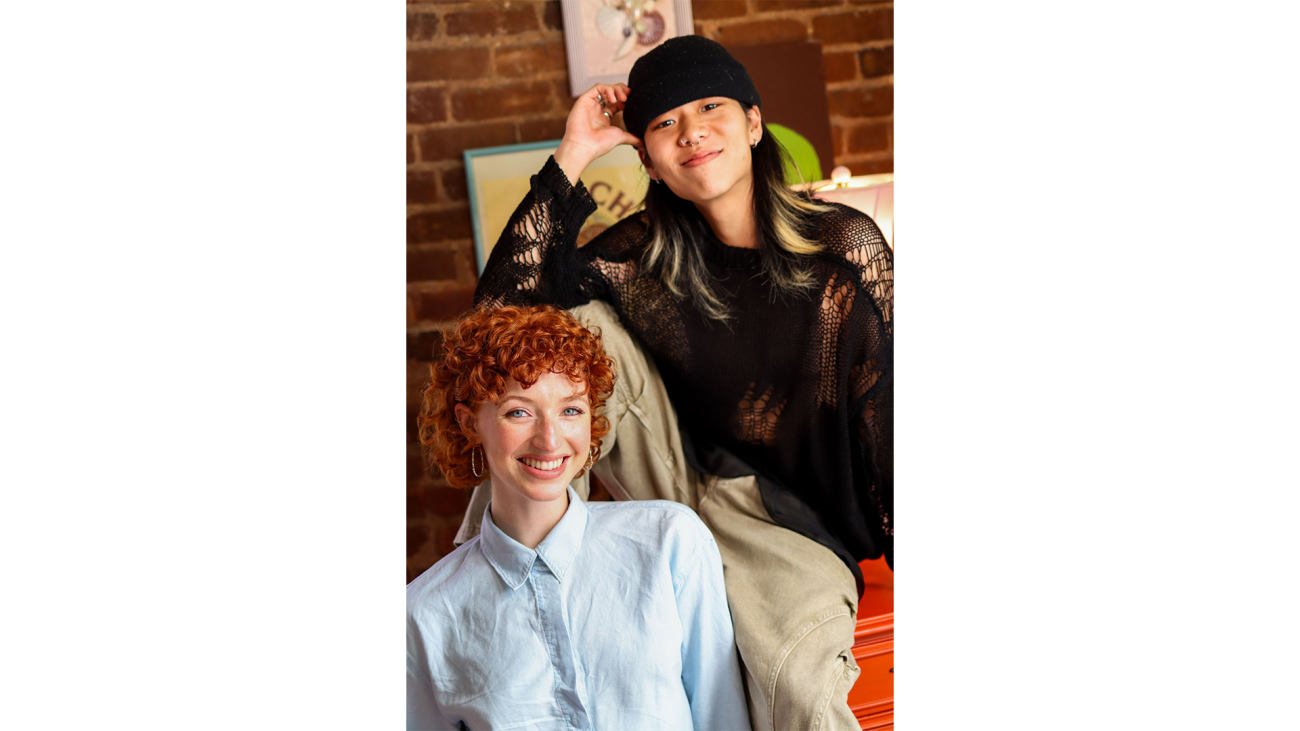Rebecca Hearns and Suong Han
Ink Magazine Fashion Forecast
Who is Chloe Allen and Maiden Name?
Suong Han

Graphic by Selah Pennington
Chloe Allen is a fourth-year fashion design student here at VCU. Her dedication to her craftsmanship has driven her brand Maiden Name. While designing for shape and fit, her priorities are functionality, comfort and the needs of her customers. We will also talk about her latest collection “Woman under Construction” and what Maiden Name will look like in the future. Working with Chloe, you can see she truly cares not just about her garments, but also how models feel in the garments. This is an ode to Chloe, rising fashion designers, and local creatives in RVA.
What is Maiden Name and what does it mean to you?
Chloe: “Maiden name is a brand where I try my best to connect with my customer and their needs, but still try to bring in the whimsiness and expertise in shape and fit. I typically specialize in dresses, but Maiden Name is evolving in the next year. I’m definitely going to be moving onto different things I’m interested in, such as leatherworking and menswear.”
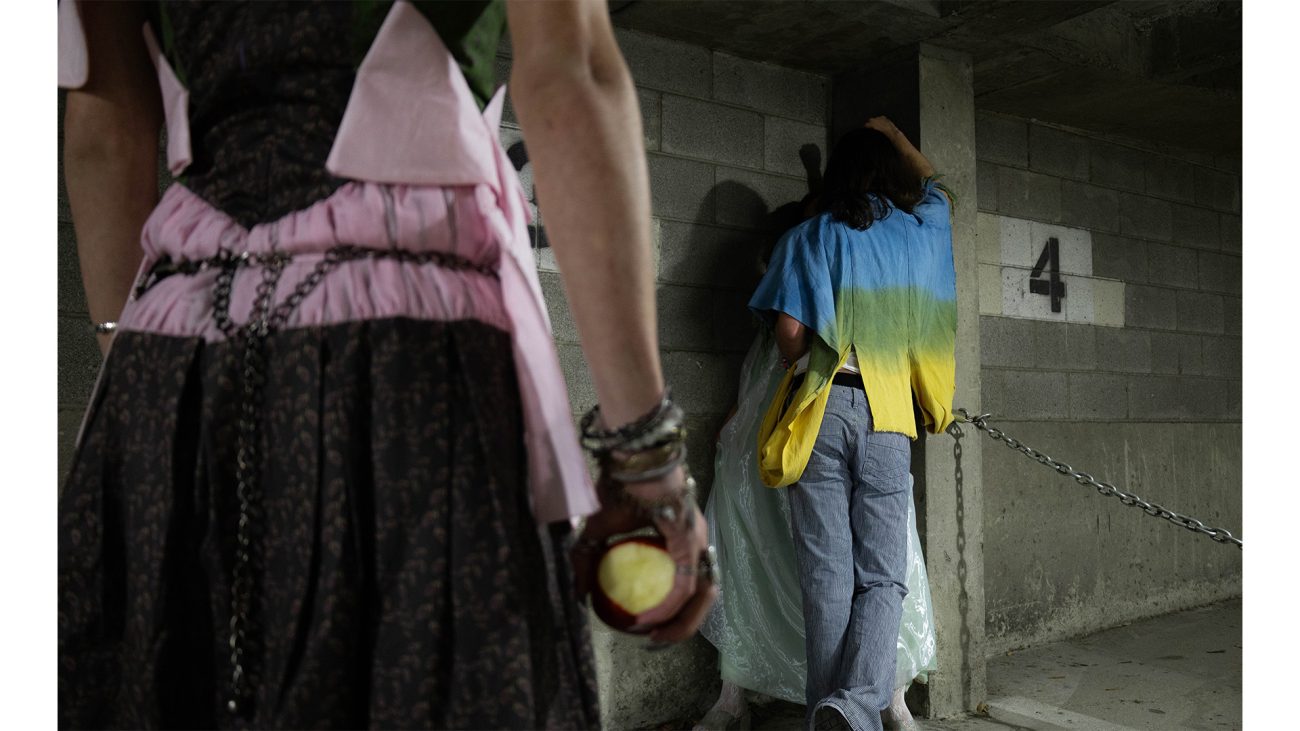
Who inspires you to design?
Chloe: “My grandmother and my mom! My grandma was a seamstress but never got the opportunity to go to school or make a business out of it. She always told me about all of the outfits she would make for my mom and other people when they might not have had the money for department store clothes. But, either way, she was a great designer — she made sure my mom was always well dressed and comfortable in her clothing. My mom gave me that extra push to get my head where it needed to be to fully see my dream. In high school, I didn’t really know what I wanted to do with my creativity because art classes didn’t work for me. My mom told me about a fashion design academy program at Fairfax High School, and after taking that I didn’t want to do anything else. Recently I’ve been inspired by my whole family’s history. My grandfather was a composer and had an extensive record collection which has inspired my upcoming pieces. I’m also inspired by my great grandparents’ tenacity for hard work, to make it through hard times simply from their need to survive. In my head, if they can do it I definitely can. It’s not only a dream for me, it’s a responsibility to make the most of my career as a designer.”
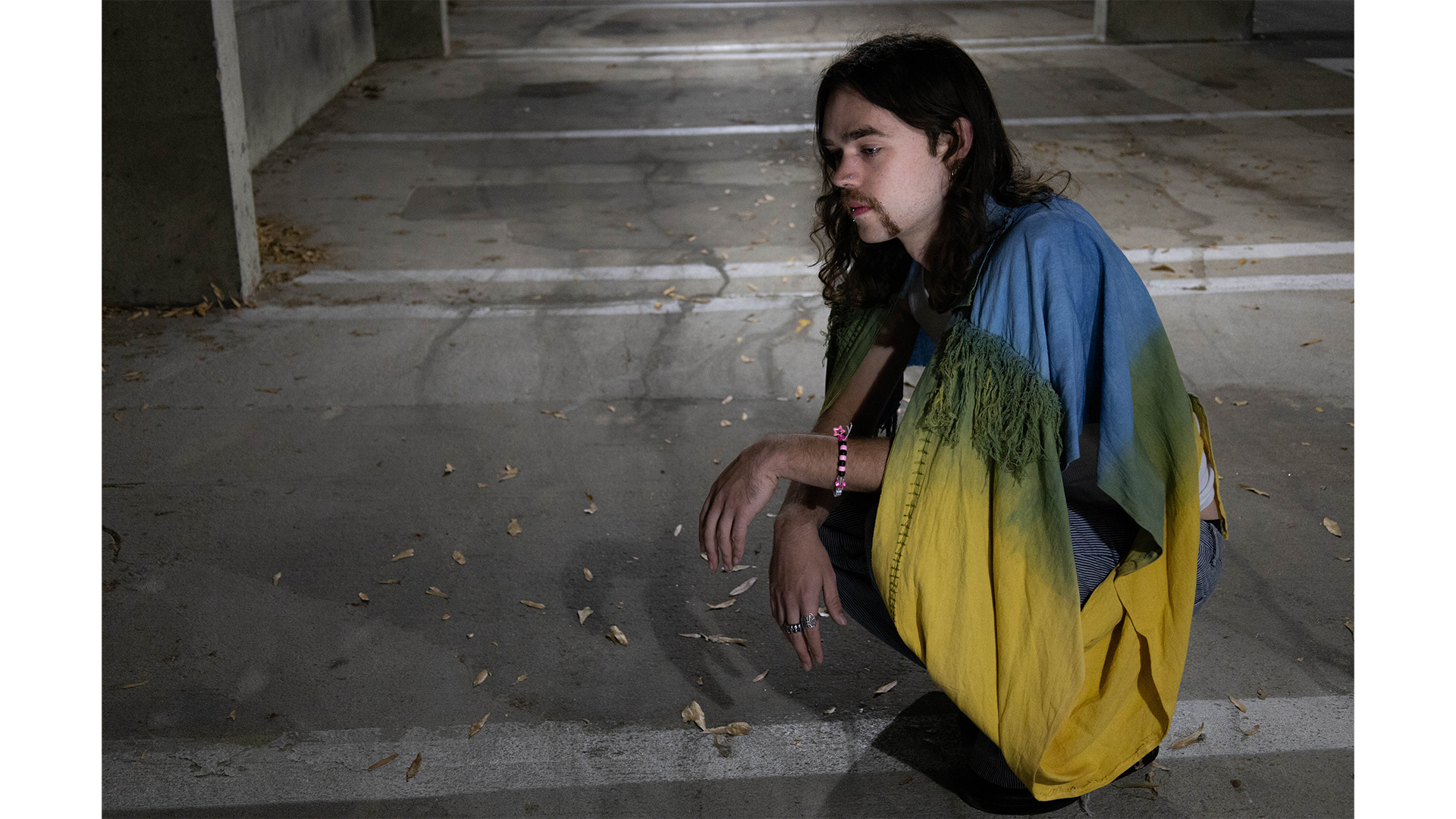
Do you see fashion as a form of self expression or as social commentary?
Chloe: “I think there’s a push and a pull. I think there’s certain people who use fashion to fit in, and then there’s certain people who use fashion to stand out. I think that in seeing that, personal expression can be like a cry to fit in, but it can also be like, ‘oh, I want to look different from people’ or ‘I wanna put myself on the outside of my body. For me personally, when I get dressed every day, it’s more for comfort than it is for style. As a fashion major you’re supposed to, like, wanna look nice and stuff, but I’d rather look frumpy and not put together. I think, as a fashion designer, I’ve been able to try to find the medium of finding comfortable clothes that are also flattering.
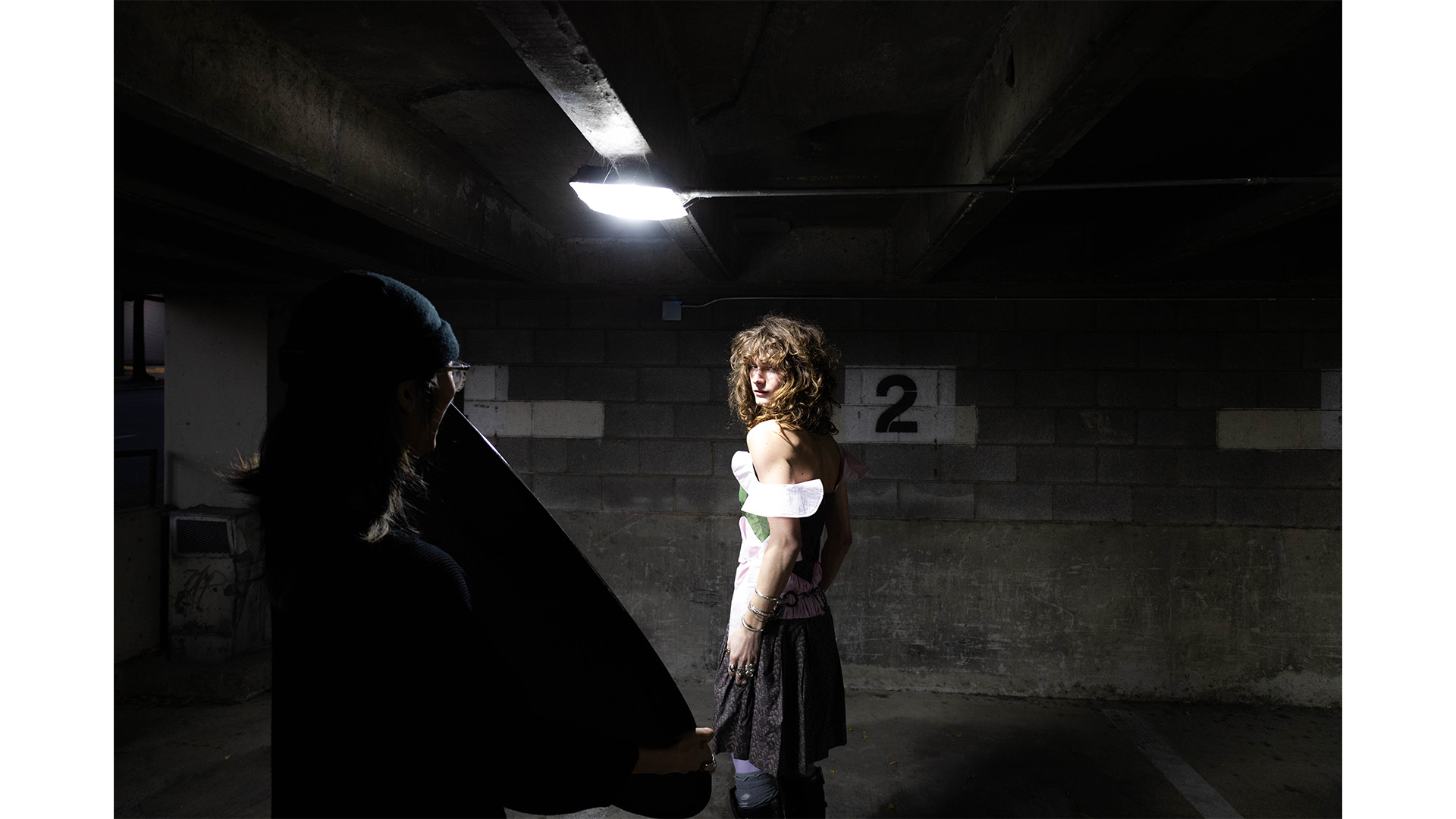
What is “Woman under Construction”?
Chloe: “WOC came from the idea of ‘what does Black beauty mean to you?’ and it took me back to a time in my life where I didn’t feel as beautiful, mainly because of the restrictions I put on myself regarding what I could wear. In middle and high school I had to wear a back brace, and that itself was like, ‘oh it’s fine, I’ll just thug it out.’, but I guess I didn’t realize that it’d interfere with my clothing, like certain things you can still see through the clothing. You could see the ridges and bumps through, and with dresses you could see the brace. It was that restriction that influenced me because I couldn’t wear certain things and felt like I couldn’t fit into the standards and trends my peers were following around me. I just felt I wasn’t as good or as beautiful as them, and so I took that as inspiration and thought, ‘ok, what exactly are the things that made me feel that way?’ It was always the strict, stiff torso, and thinking about that made me think about the construction of the dresses, and how can I make something flattering to the body without corseting — the illusion of fit and shape without restricting the wearer. I use only knit fabrics for anything tight against the body, with seaming that’s flattering to pretty much any wearer.”
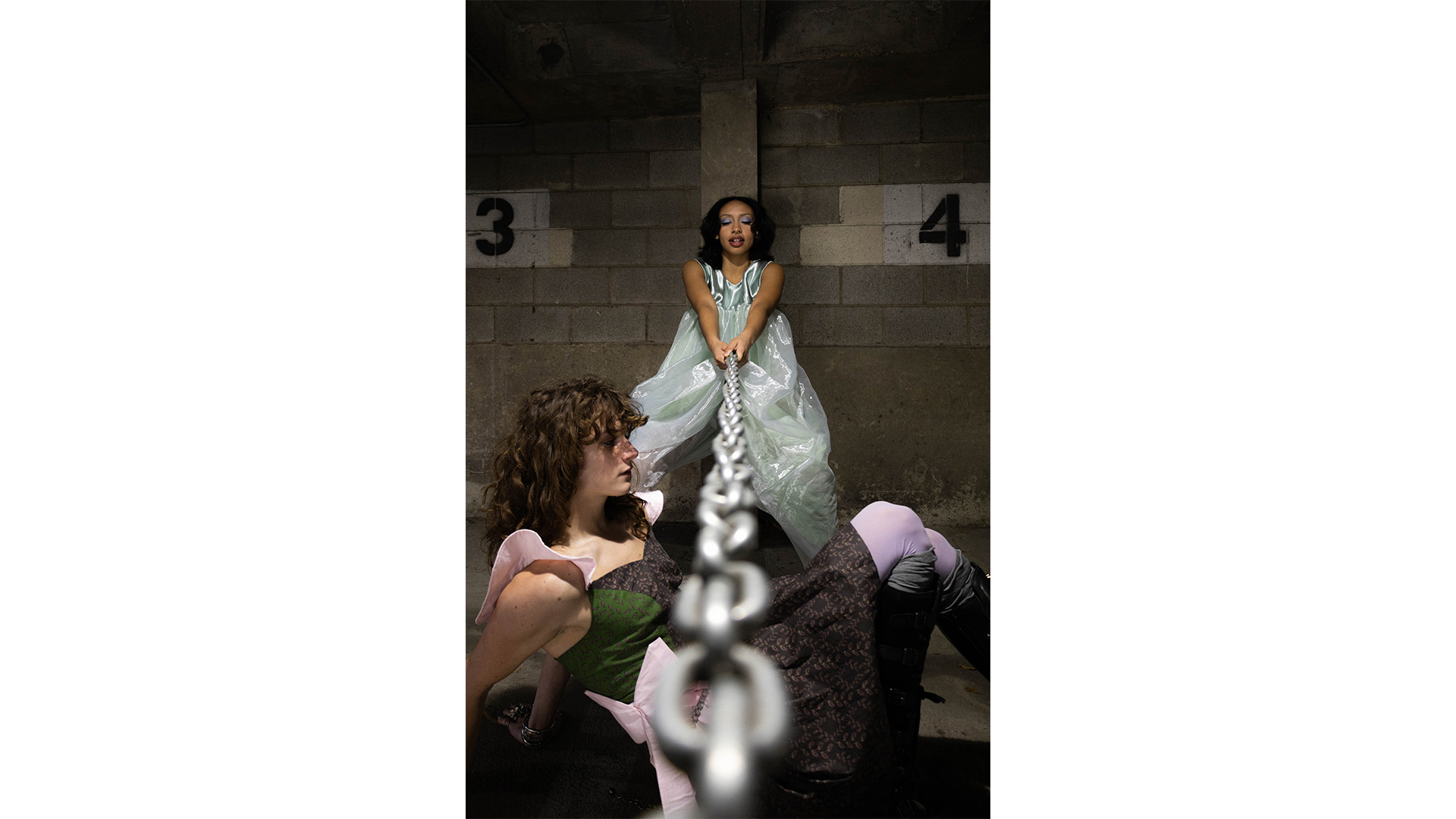
Suong: “AHHHH NO YOU ATEEE.”
Chloe: “NO LIKE THAT WAS THE VIBE LIKE GET COMFY.”
Suong: “RIGHT RIGHT.”
Chloe: “It just would adapt to the body in that way and so that was kind-of the thought process. I wanted to show the freedom that I feel now, where now I don’t have to wear the back brace. I feel like I can wear anything, but I still kind-of feel like it gives me an extra layer of skin because I really don’t care how I present to other people outwardly, I feel the most free just putting on something comfortable.”

Suong: “Chills are down my spine right now, this project really solidifies what you can do in your design principles. You’re just very thoughtful in the way you design, and it’s admirable to see how much you think about those specific things. I mean, you’re talking about the adaptability around the wearer with each dress, and I feel like a lot of times, um … that’s not really shown as much with brands, how things look with different wearers, if that makes sense?”
Chloe: “No it does. I feel like a lot of times you see the dress online, but they only sell it because of the model. At the end of the day, they’re clipping the back of the model to make the waist look a certain way or make it look like the ideal body, and when buyers buy it they think ‘oh that could be me,’ but when you get it, it’s not really what they’re selling you.”
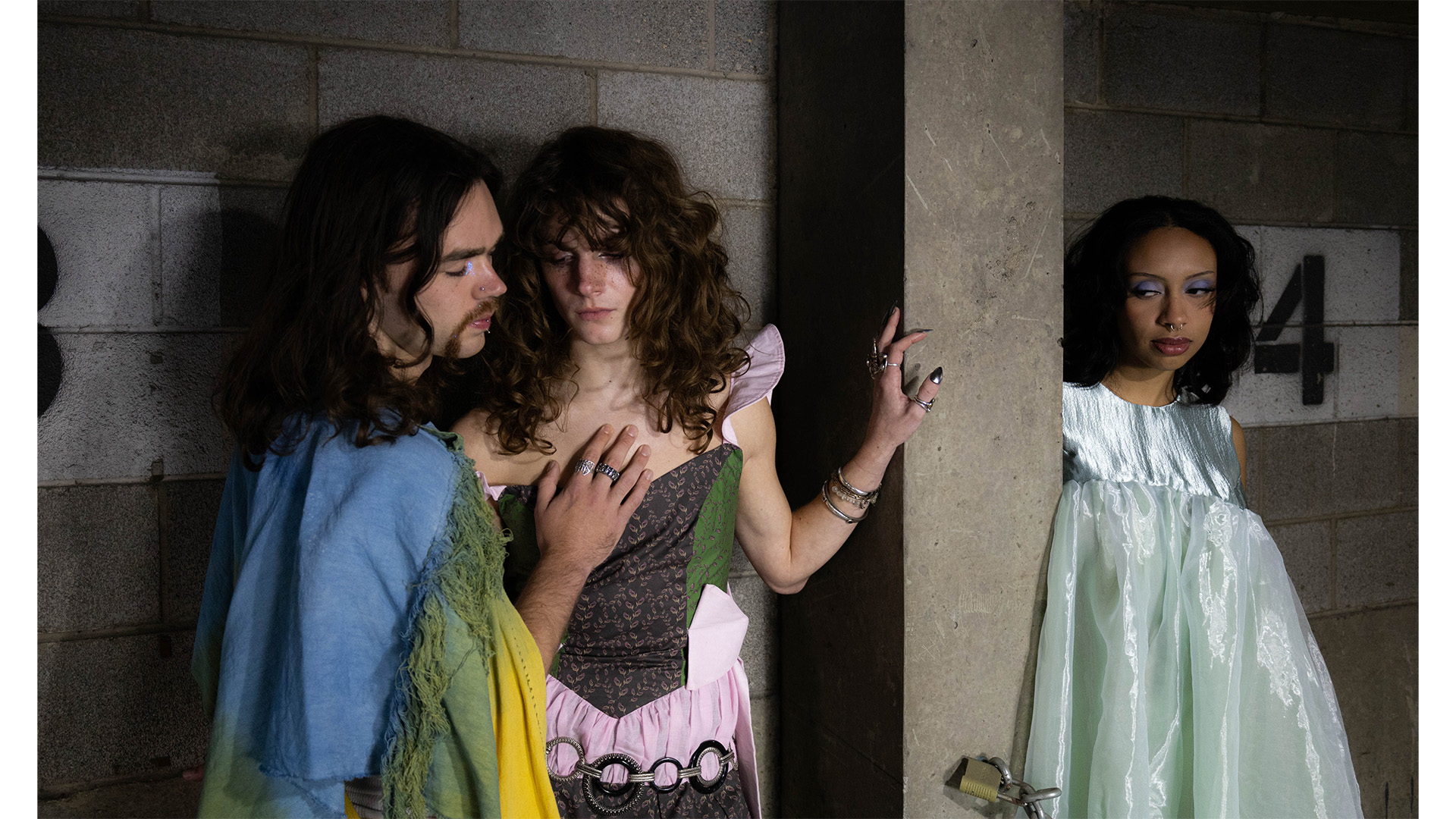
Suong: “Coming back to the project, the visual representation was so good. What was the thought process behind this? I mean, you used so many knits, fabrics, lace and all this stuff, and somehow you turned literal words and experience into something so visually captivating.”
Chloe: “I think, as a designer, I try to break things down. I think the best way to tackle a problem is to think ‘what am I addressing? What are the problems? What are the reasons why I’m making this piece?’ With the knowledge that you learn, how different things work and are constructed, you can kind-of manipulate that and make it into something your own. I was thinking about the function of dresses and things that you can wear to formal events because that was another layer to it. I always felt like, when I had to go somewhere formal or nice, I wanted to wear this nice dress, but I couldn’t wear it because usually it would show the back brace as well. I wanted to stick to that formal, over-the-top, elegant vibe. Like, “what would make my inner child happy?” So, attacking those fit issues with the fabrics was a big thing. You can’t stretch a knit to its full capacity without adding gatherings to it, or gather the woven fabric that’s attached to it. In order to allow those different dresses to fit, all these different body shapes, body types, curves, contours, whatever the issue is, you have to have both of those things.”
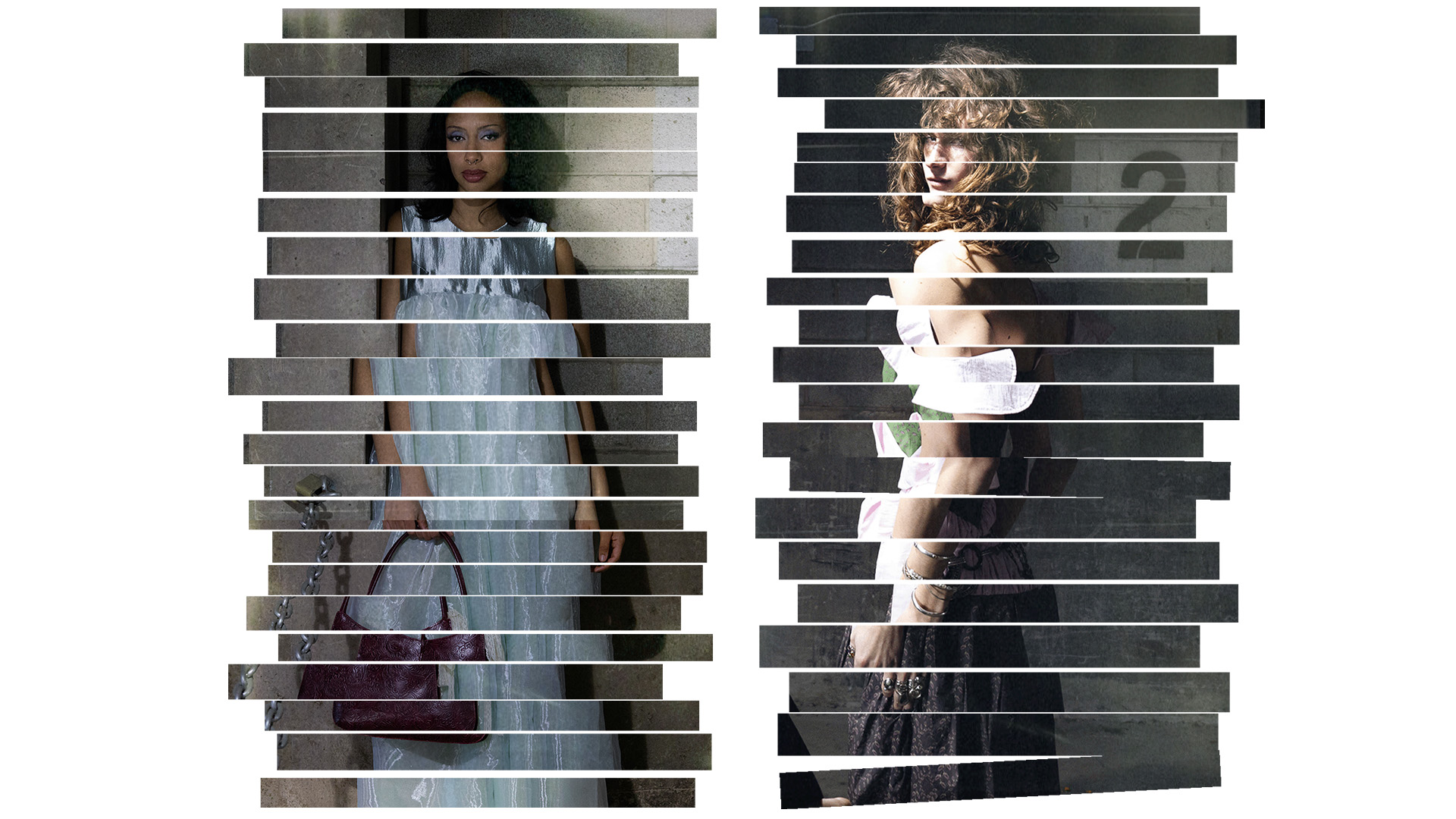
If this collection were to evolve in the future, how might it look?
Chloe: “I feel like I would break it down even more. That’s what I’ve been trying to think about in my senior year. Fundamentally, What is the reason? What’s the function? What’s the purpose? What makes this, like, something that I wanna wear? I think I would maybe elevate the silhouettes in a way where I do more comfort and keep the colors that I used, but changing necklines, changing armholes, changing things to be more specific to the shapes of my back brace in an attempt to almost say, “if I wanted to wear it with my back brace, would it completely cover it, or is it accentuating certain parts of it?” Then, not only that. I feel like, maybe bringing in skills that I’ve been learning like leatherworking, so there’s gonna be pieces coming up with that.”
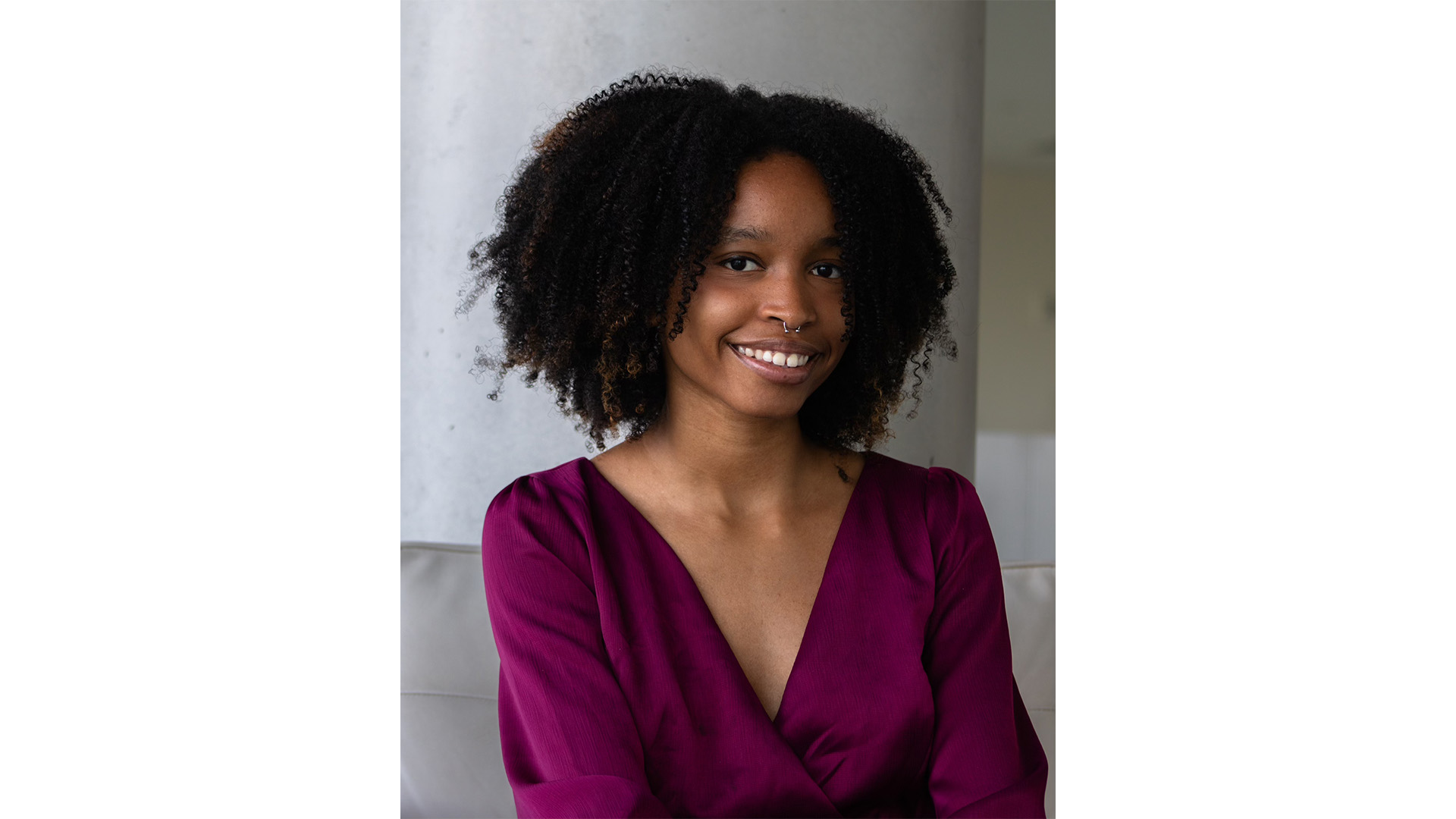
Art Direction: Suong Han and Selah Pennington
Designer: Chloe Allen
Stylist: Suong Han
Styling Assistant: Emily Mance
Photographer: Selah Pennington
Models: Daniel Lamonte, Jaylyn Johnson, Ryder Faunce

